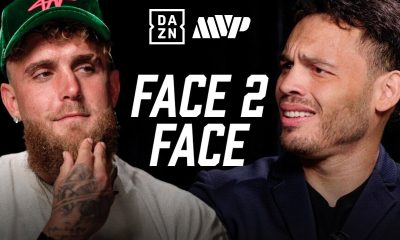NIL
Caitlin Clark Talks NIL Opportunities, Transfer Portal on Kelce Podcast
“It became a thing after my freshman year and it was kind of weird because everybody was like, ‘OK, so like what is it?’” she shared with the Kelce brothers. “Trying to maneuver the NCAA – they don’t have any rules on much anymore – so it was more so like, ‘OK, like what can […]
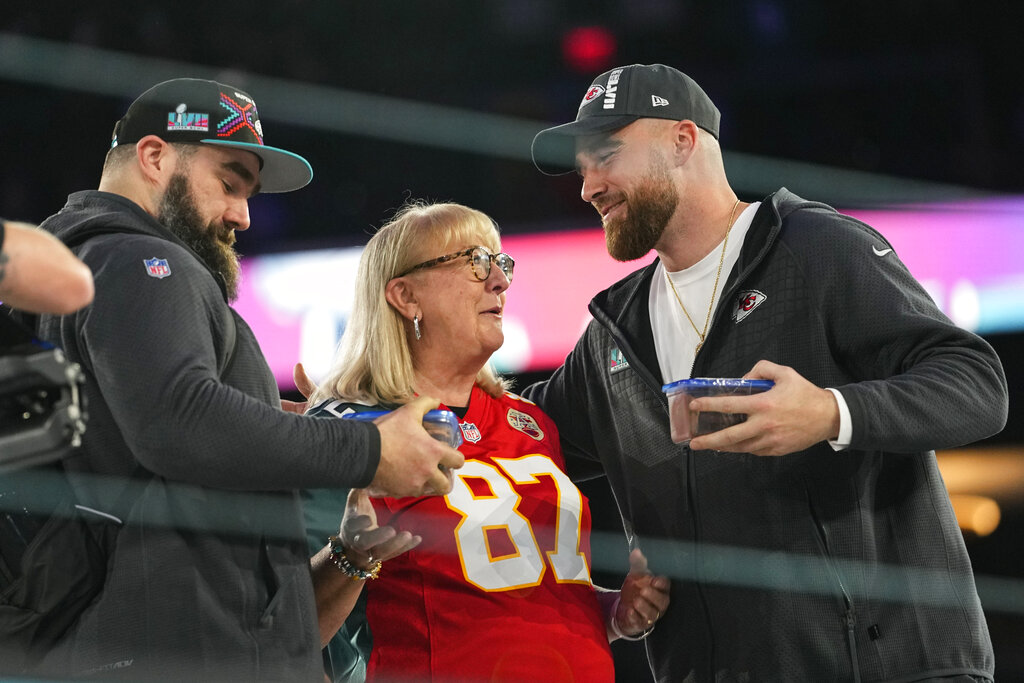


“It became a thing after my freshman year and it was kind of weird because everybody was like, ‘OK, so like what is it?'” she shared with the Kelce brothers. “Trying to maneuver the NCAA – they don’t have any rules on much anymore – so it was more so like, ‘OK, like what can we do? What can we not do?’ We were also the first, so you’re trying to figure it out as you go.”TIME’s Athlete of the Year for 2024 has continued her trajectory on and off the court, helping women’s basketball and the WNBA in particular reach record-breaking heights in 2024, from ticket sales and viewership to merchandise and corporate investment.Tipping off the new year with a podcast appearance on the widely popular show “New Heights,” WNBA Rookie of the Year and All-Star Caitlin Clark joined Travis and Jason Kelce to talk about the current state of college athletics. A trailblazer in the space while at Iowa — both on and off the court — Clark signed historic partnerships with the likes of Nike, State Farm, Panini and Gatorade, among others and has now taken her place as one of the most marketable athletes in the world. But as a “first-generation” NIL athlete in college, Clark had the unique experience navigating the space without much structure or oversight from the NCAA.Polarizing on the hardwood with her record-breaking scoring ability, Clark transitioned to a bonafide pitch-woman as a college athlete. While most NIL deals are traditional brand to athlete transactions, Clark and her team at Excel Sports were able to garner multiple national TV campaigns, often reserved for superstar pro athletes.The Iowa legend — and NCAA all-time leading scorer — opened up about her own NIL path and how the landscape has forever changed for student-athletes.In addition to joking about the lack of tax prep as a college athlete and quizzing the Kelce brothers on what their ideal NIL deals would have been while in school, Clark speaks on the opportunity for growth and accessibility of resources, so that all athletes can engage consistently and meaningfully. Although Clark was able to navigate the NIL space seamlessly, she knows that most don’t have the resources both personally or via their school. Within her “New Heights” appearance, she also compared the “egregious” transfer portal trend of free agency – especially in football – to a “minor league” or sorts and illuminated how college athletics is losing a bit of amateurism, which is what made it so fun for athletes and fans alike.In a wide-ranging conversation with the Kelce brothers, Clark detailed what the past year has been like and how NIL has already impacted women’s sports in general and what the future could look like. “My family helped me a lot, but as you get going you just figure things out and it’s fun but obviously it should have been a thing for a really long time,” she added. “It’s like the NIL part of it – like the true endorsements, like you’re doing a commercial for the local coffee shop – it’s something so easy and so simple. A normal student can do that, but like, why couldn’t an athlete?” As a WNBA rookie this past season for Indiana, Clark earned All-Star and All-WNBA First Team honors while leading the Fever to the playoffs and setting the league record for points and assists by a rookie. She tips off her sequel season in this Spring.”It’s just such a simple thing that should have been a thing for a long time, but also it was challenging to navigate and it still is,” Clark said. “Seeing these college students that don’t have the right resources around them and it stinks like it’s hard and I think that it’s something that needs to become more prevalent. I know universities are trying to start having in-house NIL people or in-house lawyers to try to manage that. They’re doing the best they can do, but obviously there’s not many guidelines or rules, so it makes it hard as well. It obviously changed a lot and it’s made it fun and I think it’s also helped women’s sports grow too.”
NIL
Michigan recruiting staff salaries revealed
In a 60-person staff of full-time football employees, Michigan devotes six to recruiting and personnel. The division is lead by senior associate AD/general manager Sean Magee, with Albert Karschnia serving as director of player personnel, Samuel Popper as director of recruiting and Kayli Johnson as director of on-campus recruiting. The Wolverines also employ assistant director […]

In a 60-person staff of full-time football employees, Michigan devotes six to recruiting and personnel. The division is lead by senior associate AD/general manager Sean Magee, with Albert Karschnia serving as director of player personnel, Samuel Popper as director of recruiting and Kayli Johnson as director of on-campus recruiting. The Wolverines also employ assistant director of recruiting John Collins and associate director on-campus recruiting/operations Ashley Terhune.
By comparison, Texas A&M employed 10 full-time staffers in the recruiting and personnel space. In real dollars, Texas A&M committed $980,000 per year in salary to recruiting and personnel, while Michigan pays $833,000 and change to its 6-person operation — with nearly half going to one person.
According to copies of contracts obtained by FootballScoop via open records request, Magee signed a 3-year contract running from March 1, 2024 through Feb. 28, 2027, with $10,000 annual raises. He’ll make $370,000 in 2026. All other recruiting staff members are on 1-year deals, running from March 1 to Feb. 28. Magee’s contract calls for a 50 percent buyout of his annual salary if he leaves prior to the conclusion of the 2026 football season, but does not require a buyout if he takes an AD or deputy AD position elsewhere. All other contracts call for 100 percent buyouts if broken before the end of the 2025 football season, and do not offer no-buyout off-ramps for promotions taken elsewhere.
All contracts also dictate Michigan’s football recruiting staff reports to AD Warde Manuel, not head coach Sherrone Moore.
Sean Magee, senior associate AD/general manager: $360,000
Albert Karschnia, director of player personnel: $180,250
Sam Popper, director of recruiting: $108,150
Kayli Johnson, director of on-campus recruiting: $85,000
John Collins, assistant director of recruiting: $50,000
Ashley Terhune, associate director of on-campus recruiting and operations: $50,000
Magee spent 2017-22 at Michigan, mostly as associate AD for football, before spending the 2022 and ’23 seasons as the chief of staff for the Chicago Bears. He returned to Ann Arbor in March 2024 as GM, where he oversees all aspects of recruiting, player personnel and NIL. A US Naval Academy graduate and Midshipmen football player, he served across the globe as an active duty naval officer from 2004-12 while also earning his MBA from William & Mary during that time. Magee then went to work for Navy football as director of player personnel.
Karschnia is a 2015 Michigan graduate who interned with the football program as an undergraduate. He spent 2017-21 as the director of player personnel at Central Michigan, then returned to U-M in December 2021 as director of recruiting operations. He was promoted to director of player personnel in 2024.
Also a Michigan graduate, Popper returned to Michigan in 2023 after stints with Oregon, Akron and Memphis.
Johnson ran track at Michigan State and Texas Tech, then worked as a stadium operations intern for the Detroit Lions, and then as assistant director of recruiting operations at Rutgers from 2023-24 before joining Michigan’s staff in March 2024. Collins also came aboard in March 2024 after serving as a recruiting and personnel analyst at Georgia.
Terhune is a Purdue graduate who held a variety of roles as an undergraduate for the Boilermakers before graduating in 2023. She worked in NIL at Western Kentucky for a year before joining Michigan last summer.
NIL
WVU’s Small Drafted by Memphis Grizzlies in Second Round
Story Links MORGANTOWN, W.Va. – West Virginia University guard Javon Small was taken in the second round of this year’s NBA Draft by the Memphis Grizzlies. He was the 48th overall choice. Small enjoyed a breakout season at West Virginia in 2025 that saw him average 18.6 points, 5.6 assists, 4.1 rebounds […]
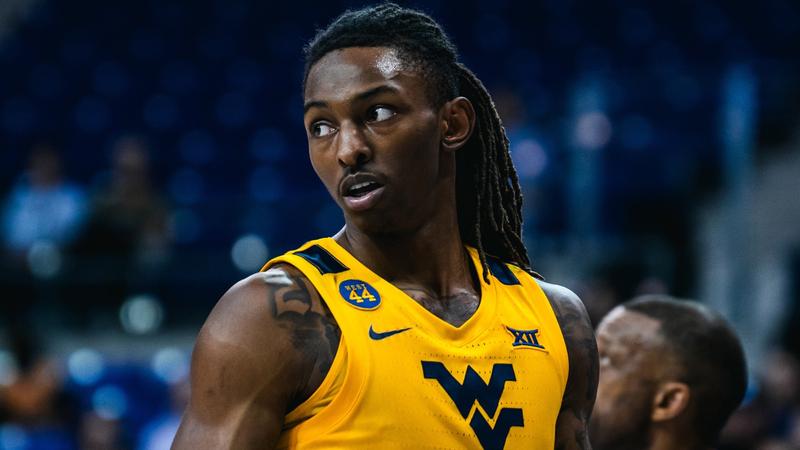
MORGANTOWN, W.Va. – West Virginia University guard Javon Small was taken in the second round of this year’s NBA Draft by the Memphis Grizzlies.
He was the 48th overall choice.
Small enjoyed a breakout season at West Virginia in 2025 that saw him average 18.6 points, 5.6 assists, 4.1 rebounds and 1.5 steals during his lone year with the Mountaineers.
His season-high 31 points were crucial in WVU’s overtime victory over Gonzaga in the Bahamas. He also scored West Virginia’s final seven points in a 62-61 upset victory at Kansas – the Mountaineers’ first-ever win in Allen Fieldhouse – and he was dominant in a 64-57 victory over second-ranked Iowa State by scoring a game-high 27 points.
“One of the most athletic guards in this entire draft,” ESPN college basketball analyst Jay Bilas said. “He’s a primary ballhandler who can create. He’s quick. He’s crafty and then defensively, he’s really good at the point of attack.
“He had 68 points in clutch time so he’s really good and when the lights are on, he shows up,” Bilas added.
Small, listed at 6-foot-3 but measuring 6-feet-1 barefoot at this year’s NBA Draft Combine, played two years at East Carolina and one at Oklahoma State, where he averaged 15.1 points per game for the Cowboys in 2024.

In 97 career college games, the South Bend, Indiana, resident scored 1,380 points, handed out 424 assists and grabbed 374 rebounds.
“(The Grizzlies) are getting a competitor, a hard worker and somebody who is going to bring positive energy every single day. They are just going to get a dog,” Small said.
Draft experts noted his strong performance in agility and shooting drills at this year’s NBA Draft Combine held this spring in Chicago, which likely offset some concerns about his lack of height and long-range shooting consistency.
On3’s James Fletcher had Small ranked No. 47 overall on his final draft board; ESPN.com NBA draft analyst Jonathan Givony had Small pegged at No. 48, while Draft Digest had him rated 50th.
Yahoo! Sports draft analyst Kevin O’Connor compared Small to Miami Heat guard Terry Rozier, writing: “Small is an undersized guard who plays bigger than his body thanks to his excellent athleticism and gritty nature. He’s a knockdown shooter off the catch and a solid lead guard, though his lack of size puts a natural cap on his upside.”
There were 59 total selections in this year’s draft.
The last West Virginia University player picked by an NBA team was guard Deuce McBride, who went 36th overall in the second round to the New York Knicks in 2021.
Including Small this year, six Mountaineer players have been taken in the draft since 2008 when forward Joe Alexander went No. 8 overall to the Milwaukee Bucks.
Forwards Da’Sean Butler and Devin Ebanks were taken consecutively at No. 42 by the Miami Heat and No. 43 by the Los Angeles Lakers in the second round in 2010, and guard Jevon Carter was the 32nd overall choice by the Memphis Grizzlies in the 2018 draft.
NIL
Remy Cofield offers insight into role as Arkansas general manager
Remy Cofield was officially hired as Arkansas general manager back on March 24 and has since been working quietly behind the scenes to get acclimated to the new gig. On Thursday, he made his first public comments since being hired on and offered insight into his role and how the athletic department plans to navigate […]

Remy Cofield was officially hired as Arkansas general manager back on March 24 and has since been working quietly behind the scenes to get acclimated to the new gig. On Thursday, he made his first public comments since being hired on and offered insight into his role and how the athletic department plans to navigate this new college landscape.
Cofield, a former Director of Scouting for the Boston Celtics and GM of their G-League affiliate Maine Celtics, was hired to “oversee the strategic allocation of department and affiliate resources to support Razorback head coaches in the acquisition and retention of championship-caliber athletic talent,” according to the official release from the school at the time.
The 12-year NBA executive officially offered a much simpler explanation of his day-to-day role as general manager when speaking for the first time on Thursday afternoon.
“It’s just pick up the pieces where things need to be picked up,” Cofield said. “I said to Hunter when we initially got on with this and started working on things, I just want to help people out. Coaching staff needs something, need advice on a particular rule that we’re looking at, call us up, let’s figure it out. If you want to talk about roster, players, all that stuff.
“If you need connection to somebody that I may have, let’s figure it out. So I think in my role it’s just trying to be a connector in a lot of ways, making sure every staff has what they need from a (revenue) share standpoint. But also brought up to speed on the new rules that are coming through, that we’re all kind of learning right now and we don’t have a lot of answers to. But we’re trying to get ahead of it and be proactive in that space.”
One of the key reasons why the general manager role has taken off in college athletics is because coaches were being tasked with handling more and more off-field issues with NIL and transfer portal. On top of their day-to-day operations as coaches, they would also have to negotiate NIL agreements and deal with player representatives. Sam Pittman mentioned his hopes for Cofield taking some of those things off his plate back during spring drills.
“Since we’ve been here, I’ve kind of been the good guy and the bad guy,” Pittman said. “Good, if you come in and you want X amount of money and all that and we feel like that’s the worth. They’re gonna go to him, so I think that buffering system is going to help me tremendously. And it’s personal, you know. Guys are gonna leave, you understand why, but then it becomes personal. We need to take that part out of the game, to me.”
Now, as Cofield’s explained on Thursday, his role is to sort of be the “bad guy” and shield coaches from athletes who are unhappy with rev-share or NIL agreements. That allows the coaches to focus more on what they’ve been hired to do.
“I don’t mind having tough conversations, and I don’t think that’s a bad thing, either,” Cofield explained. “I think when you want an answer to a question and it’s negative, that’s just what it is. I think when Sam has those conversations, we want to make sure Sam is a good guy coaching every single day, paying attention to his players’ needs from a football standpoint, and just keeping the money stuff out of it.
“I think that helps him, but again, that’s his situation. Every situation is different. I think for Sam, that helps him in a lot of ways, just to be able to connect with those guys on a personal level and be the person he is on a day-to-day basis. Allow me to be the one to have those tough conversations and say, ‘We can’t do this. We can’t do that’. Or sometimes, deliver some good news. ‘We can do this. We can do that’. I think it’s been positive for him and I hope it continues to be positive.”
On June 6, the House v. NCAA settlement was approved, the landmark decision now allows schools to pay players directly beginning on July 1. Cofield has only been at Arkansas since March and has been focused on getting acclimated to the new role while preparing for what’s to come after July 1, but he believes that the Razorbacks will be more competitive in this new landscape.
“I’m trying these last two months to just kind of get my feet wet,” Cofield said. “I was telling [Kyle Parkinson] this is the second time I’ve been down here you know, seeing the area and I didn’t really know where the media room was so, that’s the biggest thing for me. But coming down to Arkansas, it’s been fantastic ever since I stepped foot down here. People have been really, really nice.
“Our fanbase wants us to be extremely competitive. I’m extremely competitive, all of our coaches are extremely competitive. We’re going to get the right players for Arkansas, that’s the most important for us. We’ll compete with some of the money issues that are going to be out there. I think a lot of the cap stuff that we’re going to see going forward is going to level it out a little more so that we can compete from a money standpoint. But I think it starts with the players, we’ve got to get the right players for us.”
FLASH SALE – HawgSports is 50% off!! For a limited time, join the No. 1 independent source on Arkansas sports and recruiting for half the regular rate!! Get unmatched insider Razorback coverage for the equivalent of $1.03 a week, $4.48 a month and billed at only $53.70 for the entire year!! There is no promo code required for this offer, just HIT THIS LINK now, and you’ll be good to go. This offer ends soon!!
NIL
Jay Bilas shares how NIL has driven down value of second round in NBA Draft
NIL has affected everything in college sports since it began nearly four years ago in 2021. The pros have since felt those effects as well, specifically in their drafts, with how good some players have it in collegiate athletics now. Jay Bilas explained the impact of name, image, and likeness on the NBA Draft going […]
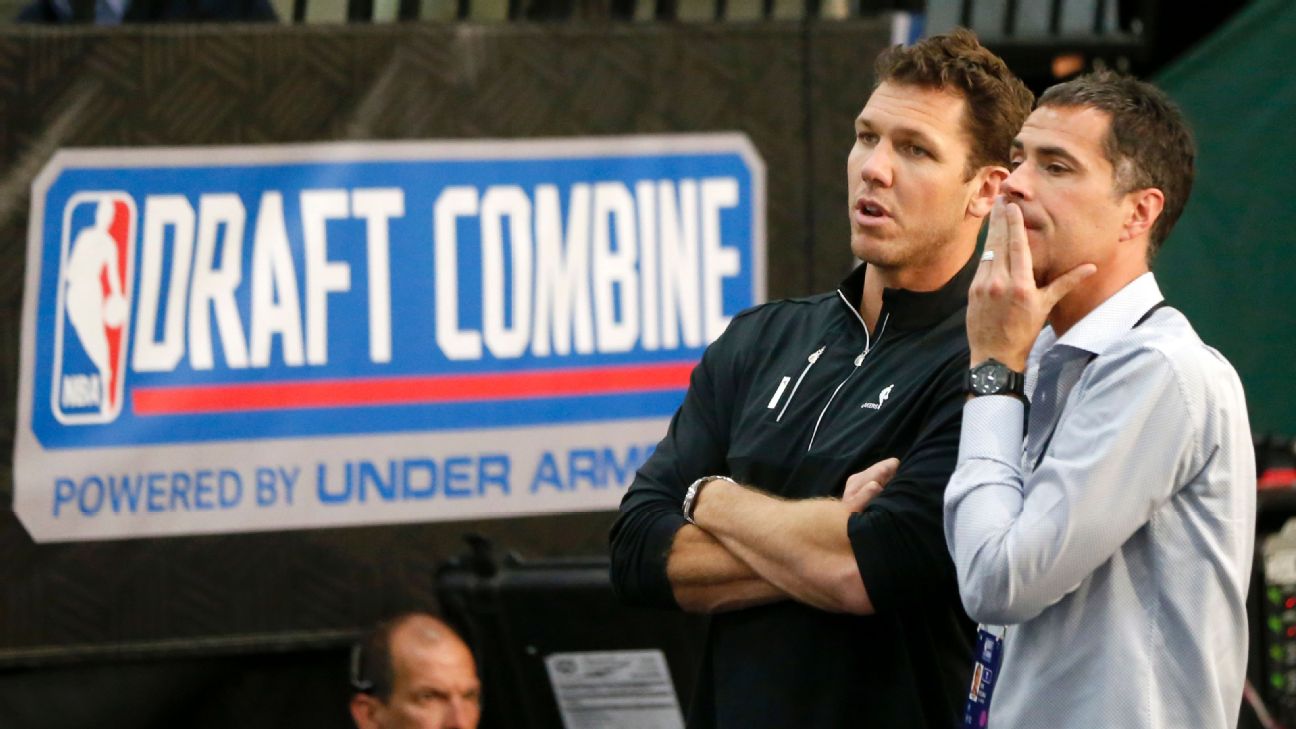
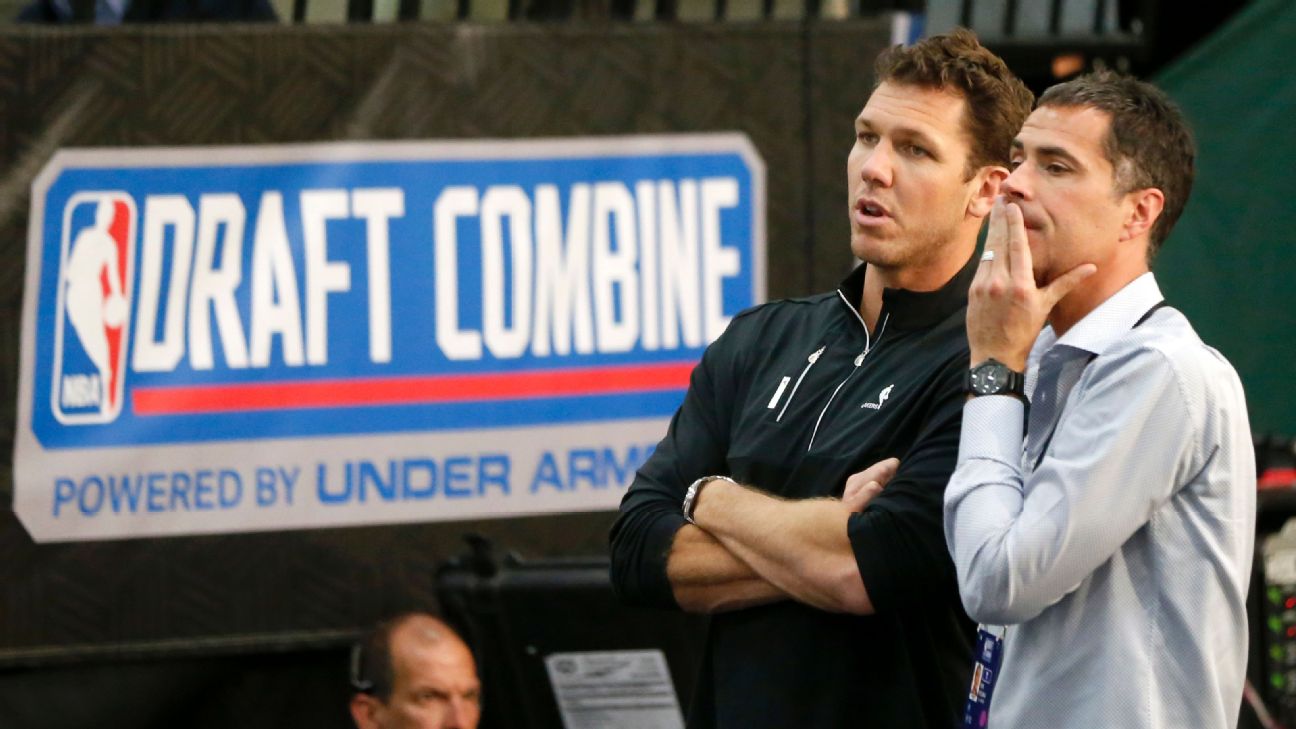
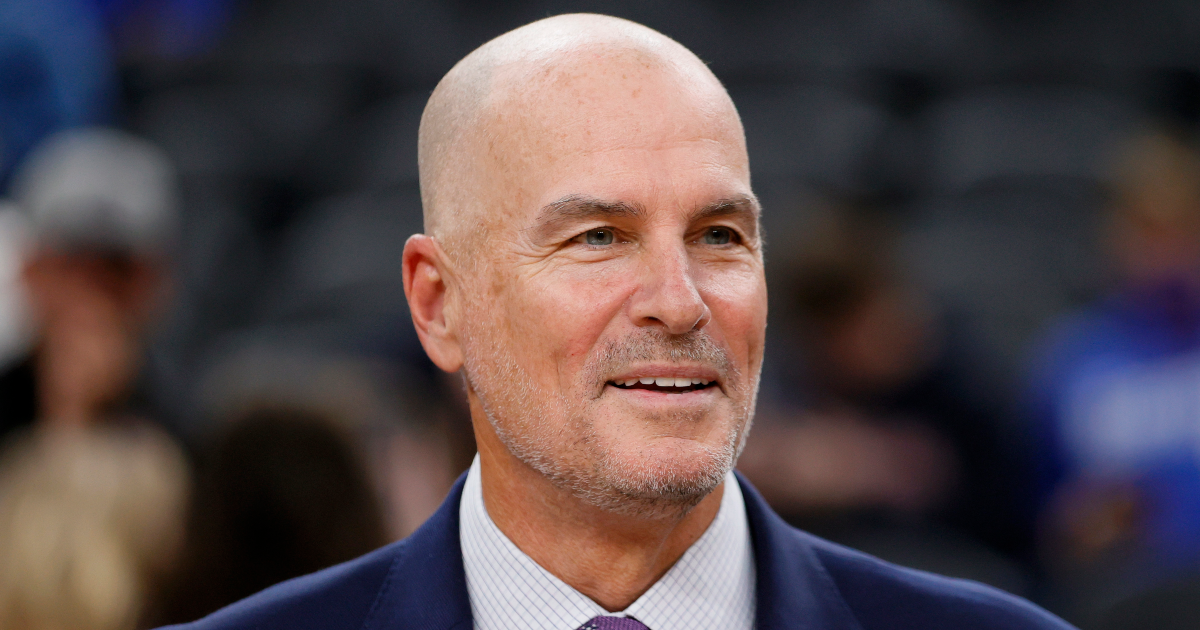
NIL has affected everything in college sports since it began nearly four years ago in 2021. The pros have since felt those effects as well, specifically in their drafts, with how good some players have it in collegiate athletics now.
Jay Bilas explained the impact of name, image, and likeness on the NBA Draft going into tonight’s second round coverage while on ‘The Pat McAfee Show’ on Thursday. He felt it had steadily decreased the value that teams can find in the second round with prospects who have remaining eligibility that could be selected in those spots, deciding to withdraw their names and return to college rather than be picked in the association.
“One thing you’re seeing with NIL now? Players are not only going to college. They’re staying in college longer,” Bilas said. “The second round is probably not – I haven’t like, you know, done this with a microscope. But the second round this year is probably not as good as the second round, like, two or three years ago because a lot of second-round picks are guys that would’ve come out two or three years ago, are staying in school because they’re going to make way more money staying in school.”
“If they’re not going to be first-round picks, they’re staying in (college),” Bilas said.
As many as 106 players, whether from college or international, entered their names to be early-entry candidates as part of this draft. Then, by the withdrawal deadline for college players on May 28th, 50 pulled their names out of this class.
Among the most notable on that list were Houston’s Milos Uzan, Duke’s Isaiah Evans, Florida’s Alex Condon, Boogie Fland, and Reuben Chinyelu, Kentucky’s Otega Oweh and Jaland Lowe, Auburn’s Tahaad Pettiford, Alabama’s Labaron Philon, Arkansas’ Karter Knox, and NC State’s Darrion Williams. Those are several players who will make the difference for potential national title contenders. The rest of the names still then include ones who will absolutely affect their respective programs as well in ’25-’26.
Several of those names could have been or would have been selected tonight in the second round, or maybe even last night in the first round for some. However, name, image, and likeness has made it a much different decision-making process considering what those players could make over a year back in college than their first as rookies in the NBA.
First round picks make several million dollars on guaranteed deals as rookies, but second-round picks aren’t on the same wage scale, meaning less guaranteed money for contracts closer to the minimum or ones for a two-way signing. That’s the same value or less than some of them would make back in college, based on the compensation at their respective programs.
There are still good players to be found by franchises in the second round, with that on display tonight as 29 more selections will be made. Still, as compared to previous drafts in years past, there may be less talent available this year and in ones moving forward, as a result of NIL.
NIL
Jay Bilas shares how NIL has driven down value of second round in NBA Draft
NIL has affected everything in college sports since it began nearly four years ago in 2021. The pros have since felt those effects as well, specifically in their drafts, with how good some players have it in collegiate athletics now. Jay Bilas explained the impact of name, image, and likeness on the NBA Draft going […]

NIL has affected everything in college sports since it began nearly four years ago in 2021. The pros have since felt those effects as well, specifically in their drafts, with how good some players have it in collegiate athletics now.
Jay Bilas explained the impact of name, image, and likeness on the NBA Draft going into tonight’s second round coverage while on ‘The Pat McAfee Show’ on Thursday. He felt it had steadily decreased the value that teams can find in the second round with prospects who have remaining eligibility that could be selected in those spots, deciding to withdraw their names and return to college rather than be picked in the association.
“One thing you’re seeing with NIL now? Players are not only going to college. They’re staying in college longer,” Bilas said. “The second round is probably not – I haven’t like, you know, done this with a microscope. But the second round this year is probably not as good as the second round, like, two or three years ago because a lot of second-round picks are guys that would’ve come out two or three years ago, are staying in school because they’re going to make way more money staying in school.”
“If they’re not going to be first-round picks, they’re staying in (college),” Bilas said.
As many as 106 players, whether from college or international, entered their names to be early-entry candidates as part of this draft. Then, by the withdrawal deadline for college players on May 28th, 50 pulled their names out of this class.
Among the most notable on that list were Houston’s Milos Uzan, Duke’s Isaiah Evans, Florida’s Alex Condon, Boogie Fland, and Reuben Chinyelu, Kentucky’s Otega Oweh and Jaland Lowe, Auburn’s Tahaad Pettiford, Alabama’s Labaron Philon, Arkansas’ Karter Knox, and NC State’s Darrion Williams. Those are several players who will make the difference for potential national title contenders. The rest of the names still then include ones who will absolutely affect their respective programs as well in ’25-’26.
Several of those names could have been or would have been selected tonight in the second round, or maybe even last night in the first round for some. However, name, image, and likeness has made it a much different decision-making process considering what those players could make over a year back in college than their first as rookies in the NBA.
First round picks make several million dollars on guaranteed deals as rookies, but second-round picks aren’t on the same wage scale, meaning less guaranteed money for contracts closer to the minimum or ones for a two-way signing. That’s the same value or less than some of them would make back in college, based on the compensation at their respective programs.
There are still good players to be found by franchises in the second round, with that on display tonight as 29 more selections will be made. Still, as compared to previous drafts in years past, there may be less talent available this year and in ones moving forward, as a result of NIL.
NIL
College football 26 toughest stadium rankings says no to Hogs, yes to more cowbell
When EA Sports released its first college football video game in over a decade, Donald W. Reynolds Razorback Stadium ranked in the top 25 hardest home-field advantages in the game. In College Football 26, that’s no longer the case. Arkansas football dropped from College Football 26 toughest places to play Arkansas didn’t make the cut […]
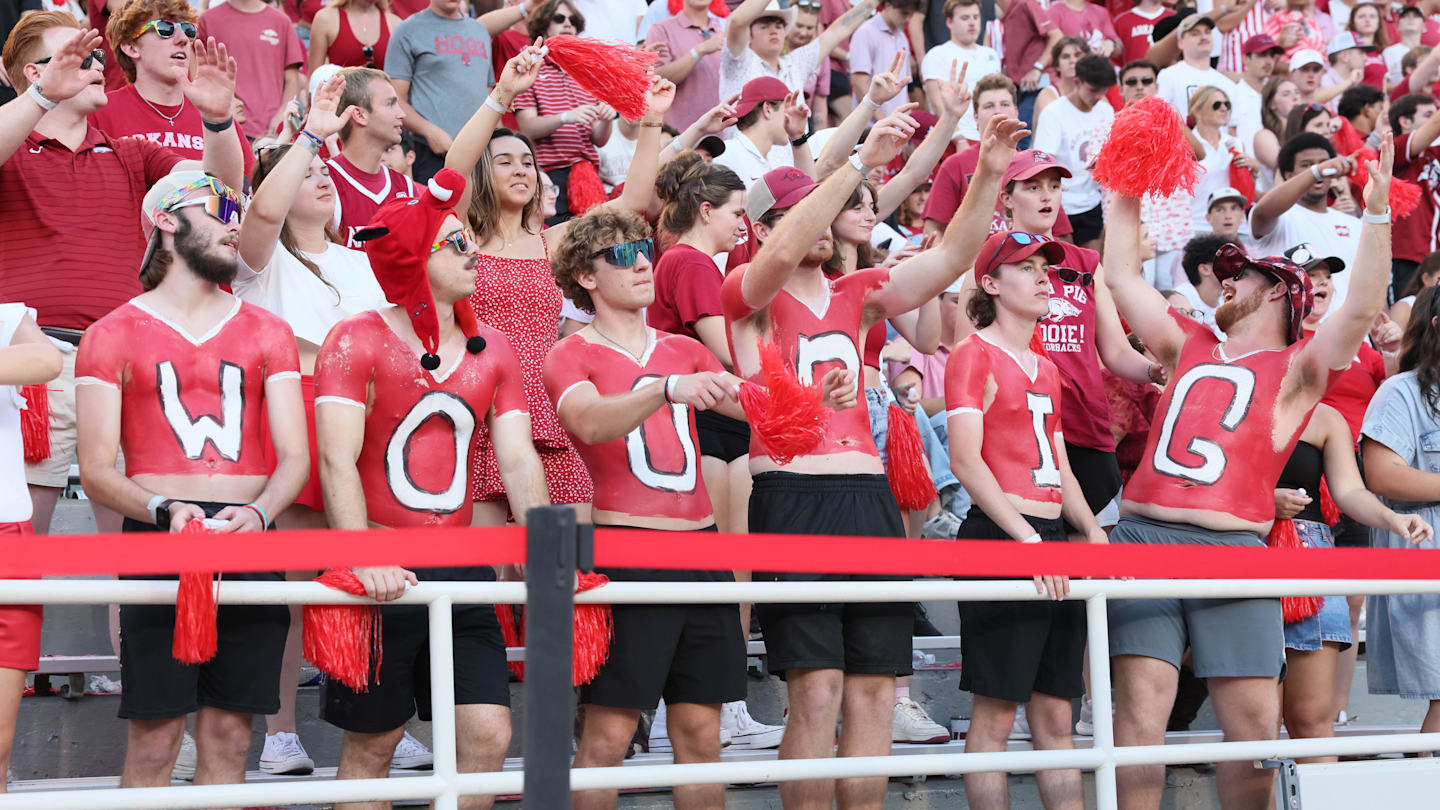
When EA Sports released its first college football video game in over a decade, Donald W. Reynolds Razorback Stadium ranked in the top 25 hardest home-field advantages in the game. In College Football 26, that’s no longer the case.
Arkansas football dropped from College Football 26 toughest places to play
Arkansas didn’t make the cut this year, but to be fair, it was shocking they made it in the first place. Over the last ten seasons, Arkansas has accumulated a home record just above .500 (35-34). Still, it wasn’t the most criticized choice, with Texas A&M coming in first place last year. Fans pointed out that the Aggies had recently lost to Appalachian State when the list was released, and it appears that EA Sports has righted their wrongs. Kyle Field now sits at No. 11.
However, the new ranking has its share of problems. The last five are especially heinous. Norte Dame comes in at No. 21, which is completely ridiculous. The Fighting Irish may be overrated most seasons, but they’re still excellent and have only had 12 losses in Notre Dane since the 2015-16 season.
It’s completely unrealistic to sandwich Notre Dame Stadium between Rice-Eccles Stadium (Utah) and Carter-Finely Stadium (NC State). No. 2022, 23, and 25 are off-the-wall picks, too, but for a different reason. With NC State at No. 22 and Oklahoma State at No. 23, they don’t exactly scream “terrifying home environments.”
Sure, Cowboy fans are basically on top of the players on the sideline, but Arkansas, which is annually a bottom-third SEC, nearly wiped the floor with them in Stillwater until the Hogs shot themselves in the foot. And OK State fans can’t quite claim the environment helped because Arkansas continued to do it all season, including at home.
Mississippi State comes in at No. 25, but let’s be real—it’s just because of the cowbells. EA Sports has taken too much advice from Christopher Walken. We, in fact, don’t need more cowbells. Davis Wade Stadium is hard to play in because opposing players can’t hear themselves talk, but that hasn’t stopped them from beating Mississippi Stat. The Bulldogs have a slightly higher home winning percentage (.588) than Arkansas.
Why does it matter?
In College Football 26, home-field advantage isn’t just cosmetic—it’s game-changing. Just like in College Football 25, EA Sports is turning up the intensity by making crowd energy and stadium atmosphere directly impact gameplay, only more so for its newest edition.
Players on the road will face a wave of immersive challenges like distorted play art, jittery screen shakes, blurred routes, and drops in confidence and composure. The rankings now carry real weight, as playing in a top-tier environment could rattle even the most composed athletes, just like on a real Saturday in the fall.
College Football 26 toughest places to play top 25 rankings
- Tiger Stadium: LSU
- Beaver Stadium: Penn State
- Ohio Stadium: Ohio State
- Stanford Stadium: Georgia
- Bryant -Denney Stadium: Alabama
- Memorial Stadium: Clemson
- Ben Hill Griffin Stadium: Florida
- Gaylord Family-Oklahoma Memoria Stadium: Oklahoma
- Autzen Stadium: Oregon
- Michigan Stadium: Michigan
- Kyle Field: Texas A&M
- Neyland Stadium: Tennessee
- Darrel K. Royal Texas Memorial Stadium: Texas
- Doak S. Campbell Stadium: Florida State
- Camp Randall Stadium: Wisconsin
- Williams-Brice Stadium: South Carolina
- Jordan-Hare Stadium: Auburn
- Husky Stadium: Washington
- Kinnick Stadium: Iowa
- Rice-Eccles Stadium: Utah
- Notre Dame Stadium: Notre Dame
- Carter-Finley Stadium: NC State
- Boon Pickens Stadium: OK State
- Spartan Stadium: Michigan State
- Davis Wade Stadium: Mississippi State
-

 Motorsports2 weeks ago
Motorsports2 weeks agoNASCAR Weekend Preview: Autódromo Hermanos Rodríguez
-

 Motorsports2 weeks ago
Motorsports2 weeks agoNASCAR Through the Gears: Denny Hamlin has gas, a border needs crossing, and yes, that’s a Hemi
-

 NIL3 weeks ago
NIL3 weeks agoShai Gilgeous
-

 Motorsports2 weeks ago
Motorsports2 weeks agoNASCAR Race Today: Mexico City start times, schedule and how to watch live on TV
-

 High School Sports3 weeks ago
High School Sports3 weeks agoHighlights of the Tony Awards
-

 Health2 weeks ago
Health2 weeks agoGymnast MyKayla Skinner Claims Simone Biles 'Belittled and Ostracized' Her amid Riley …
-
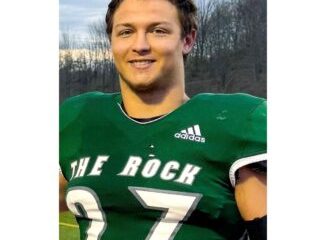
 Health3 weeks ago
Health3 weeks agoParents Create Fund in memory of son, raise awareness about suicide and mental health
-

 Professional Sports3 weeks ago
Professional Sports3 weeks agoUFC 316
-

 NIL2 weeks ago
NIL2 weeks agoTennessee law supersedes NCAA eligibility rule
-

 College Sports2 weeks ago
College Sports2 weeks agoFisk to discontinue history-making gymnastics program after 2026 | Area colleges








